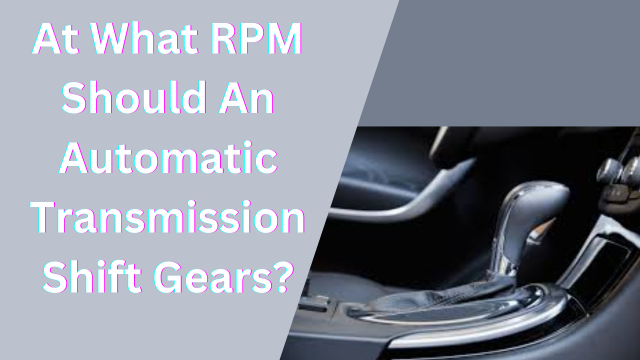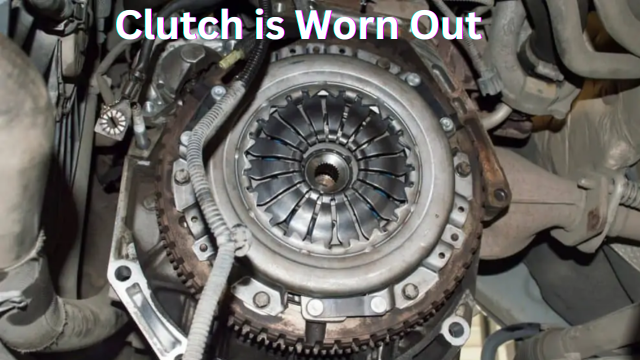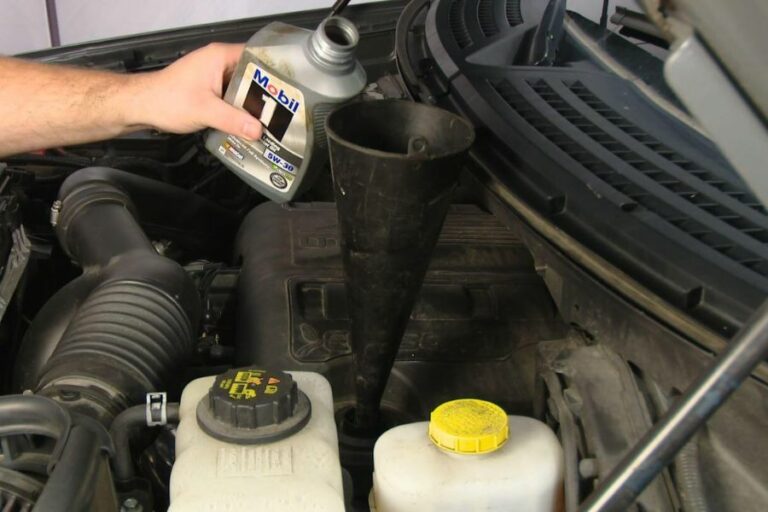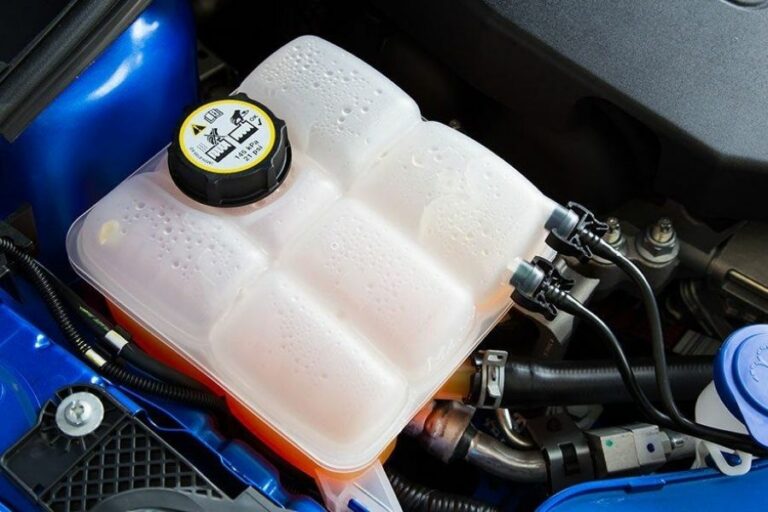Why Automatic Transmission High RPM Before Shifting?6 Reason
Does your car have automatic transmission high rpm before shifting? Well, you’re not the only one. This has become a common problem for many. And because of high RPM, we face problems like fuel waste and different engine wear problems.
But what causes automatic transmission high RPM before shifting? Well, the most likely reasons are low transmission fluid or a leaking transmission. It can also be because of faulty solenoids, idle control valve failures etc.
In this article, I will explore the causes in detail and provide solutions for each one. I’ll also take you through some other high RPM issues. Then I’m gonna close by answering some of the top questions.
At What RPM Should An Automatic Transmission Shift Gears?

The RPM at which an automatic transmission should shift can vary depending on the make and model of your vehicle. It also depends on your very own driving conditions.
Generally, most automatic transmissions will shift around 2,000 to 2,500 RPMs during normal driving conditions. However, like I said, this can vary based on factors such as your car’s weight, the transmission’s gear ratio, and your driving style as well.
You should keep these two scenarios in mind as well.
- During high performance driving or towing heavy loads, the transmission may shift at higher RPMs to provide additional power.
- During more relaxed or fuel-efficient driving, the transmission may shift at lower RPMs to conserve fuel.
So, It’s important to understand the specifics of your vehicle and to drive according to the recommended shift points. You can always check the owner’s manual or consult with an expert to know about the shift points.
Modern vehicles have adaptive systems. But it’s important to be aware of the RPM and not to over-rev the engine to avoid causing damage to the engine and transmission.
What is the Normal RPM for Automatic Transmission?
The normal RPM for an automatic transmission is between 2000 and 2500 RPM.However, these numbers can vary depending on the make and model of the vehicle, as well as the driving conditions.
6 Reasons Automatic Transmission High RPM Before Shifting:
There can be a variety of reasons and high RPMs can often lead up to damages in the transmission system. Here are some of the most common reasons for high RPM before shifting an Automatic Transmission. Check the solutions properly to fix the as soon as you can.
1. A Leaking Transmission

One of the most common reasons is a leaking transmission. In my life, I have faced this problem twice, and trust me, it is absolutely horrible.
When you have a leaky transmission, it is quite possible that it will cause an automatic transmission to run at high RPM before shifting. Wondering how?
Well, it’s because the transmission fluid does the job of lubricating and cooling the transmission. As well as providing the necessary hydraulic pressure to engage the gears.
So when the transmission fluid is low on your favorite vehicle, it can cause the gears to slip and the RPM to increase before shifting.
Solution:
I have a straight-cut solution for you.
- Check the transmission
- Repair the Transmission System
- Refill it with new Fluid
Remember, you must fix the transmission system before refilling it. A lot of people try doing it without fixing the entire system. And as a result, they keep on suffering. Replacing the fluid might cost you around $250.
So, The gaskets, seals, or O-rings might need to be replaced. Then you are good to go.
2. Speed Sensors Problem
This is another common reason. A faulty speed sensor can cause severe issues with your car’s automatic transmission, including high RPM before shifting.
What does the speed sensor do?
It accurately senses the car’s speed. It is responsible for providing the transmission control module with information about your car’s speed.
So, if the sensor is not functioning properly, your car might not be able to shift the gear properly. The transmission will not know when to shift the gears properly. And as a result, it will shift the gears sooner or later, leaving the entire engine in trouble.
One of my friends had problems with his speed sensor. The transmission used to stay in low gear for longer than necessary. So I hope you won’t face this kind of trouble.
Solution:
It’s really important that you have the sensor checked. If you suspect there may be an issue with the sensor, I suggest you get it replaced.
The average cost of replacing a speed sensor can range from $280 to $325.
Also, if you have already traveled for around 100,000 miles, then take my suggestion and get it replaced right away.
3. Problem with the Idle control valve
If you are continuously having high RPM before shifting, then it is time to check the idle control valve.
The idle control valve is responsible for maintaining the engine’s idle speed. When your car is idle, this valve helps maintain a specific RPM.
So what will happen if the valve doesn’t work properly? It will cause the engine to idle at a higher RPM than normal, which can in turn cause the transmission to shift at a higher RPM.
Solution:
Just like the speed sensor, you need to inspect the valve properly at first. Now, there might be two kinds of problems.
- Problem with the blown fuse
- Problem with the Idle Control
If it is the first one, then you do not have to worry that much. Just get the fuse replaced.
But if there is a problem with the idle control, then I’m afraid you’ll have to replace it completely. Depending on your car’s model, it can cost you from $120 to $500.
4. Out of Timing Transmission

The gears may not be properly aligned if the car’s transmission is out of timing. It is another reason our automatic cars face high RPM.
When there is a worn-out timing belt or camshaft, the transmission might be out of timing. And you will find that the engine’s RPM is too high to downshift the gears.
And trust me, it can become really dangerous for the entire engine. So, check the solution below and fix it quickly.
Solution:
The solution to this problem is to have the transmission serviced and adjusted.
When you have problems with the camshaft, you have to replace it before there is any kind of major problem in the engine.
However, replacing the timing belt or camshaft can take quite a bite out of your pocket. For a camshaft, it can start at $500 and end up costing $3000.
In the case of a timing belt, it will be around $500 to $1000.
So if you decide to change these parts, try to look for the best deal possible. Get the best mechanic who can get the job done perfectly within your budget.
5. Clutch is Worn Out

The clutch is one of the most vital components of the engine. And if there is any kind of problem with it, it will lead straight to the transmission.
You may also read Why No Pressure in Clutch After Bleeding the System?
How’s that? Like I said, it is closely related to the transmission. It is responsible for engaging and disengaging the gears, and a worn clutch can cause the gears to slip.
In simple words, the clutch helps the transmission get power from the engine. And when it is worn out, the transmission does not get enough power. So, it eventually causes the gears to slip, and you will get high rpm before shifting.
Solution:
Just like the previous ones, if your clutch is worn out, you’re going to have to replace it.
Many of us think that you can replace the clutch all by yourself. But I would suggest you not do it. As the clutch is an important part, you do not want anything to go wrong.
So get a good mechanic and replace it. Thinking about the cost? Well, the average cost of a clutch replacement is around $300 to $500.
6. Leakage Problems in Vacuum Hoses
The last thing I’m going to tell you about is the leakage problem in the vacuum hoses.
Your car can come with a lot of hoses. The vacuum hoses are responsible for providing the necessary vacuum pressure to engage the gears.
But when it is leaking, it can cause not just high RPM but also the entire system to fail.
Worried? Don’t be. Quickly check the solution below.
Solution:
If you discover a leak in a vacuum hose, you should remove the transmission cover and replace the hose. The cost will vary greatly according to the cause and location of the leak.
I hope you now understand why automatic transmissions run at high RPMs before shifting. Alongside these troubleshooting methods, I would recommend you perform regular maintenance.
These would help you identify any kind of problem and take the necessary steps quickly.
Read more on NP246 Transfer Case Problems Fix & Upgrade
5 Impacts of Automatic Transmission High RPM Before Shifting
Some of us take high RPM really lightly. But you definitely should not. High RPM has a really big negative impact on the vehicle. From overheating to reducing the entire performance of the engine, it can harm your car in a lot of ways actually. Check the impacts below:
1. Transmission Overheating
This is one of the most significant impacts. High RPMs before shifting can cause the transmission to overheat, which can lead to damage to the internal components.
You already know that the transmission is filled with fluid. It works efficiently to cool and lubricate the gears and other moving parts.
But when the transmission overheats, the fluid can start to break down. It loses its ability to lubricate and cool the transmission properly.
When there were transmission overheating problems with my Ford Focus it faced different overheating issues as well.
2. Reduced Lifespan of Transmission
Another impact of high RPM is that it can reduce the lifespan of the transmission, resulting in costly repairs or replacements in the future.
Continuously high RPMs can cause the vehicle’s transmission to shift poorly, which can reduce power and performance. And in the long run, it will make your vehicle feel less responsive and less powerful.
3. Decreased Fuel Efficiency
It won’t just affect the transmission system negatively; it will also decrease fuel efficiency.
When the transmission is shifting gears at high RPMs, the engine has to work harder to maintain that speed. This can cause the engine to consume more fuel, which can lead to decreased fuel efficiency.
4. Driveability Issues
Let me guess. You are wondering what else can go wrong because of High RPMs right?
Well, it can cause different driveability issues like
- Jerking
- Hard shifting
- Clunking noises
These issues can make your driving experience uncomfortable and dangerous.
5. Towing and Hauling
Do you have to haul heavy loads? Very often?
Then I have some bad news for you. Extremely High RPMs can cause severe transmission damage while towing or hauling heavy loads.
Towing or hauling heavy loads can put a lot of stress on the transmission. And if the transmission is shifting gears at very high RPMs, it can cause additional stress on the gears and other moving parts.
How Does an Automatic Transmission Work?
Automatic transmissions use a combination of hydraulics, electronics, and planetary gears to automatically shift gears without driver intervention. The main components of an automatic transmission are:
- Torque converter: Torque converters are fluid couplings that connect engines with transmissions. It allows the engine to idle while the vehicle is stopped, and it also multiplies torque at low speeds.
- Planetary gearset: The planetary gearset is a type of gear train that provides different gear ratios. It consists of three sets of gears: the sun gear, the ring gear, and the planet carrier.
- Hydraulic control unit: The hydraulic control unit uses pressurized fluid to engage and disengage the clutch packs that control the planetary gearset.
- Electronic control unit (ECU): The ECU monitors the vehicle’s speed, engine RPM, and other factors to determine when to shift gears.
When the vehicle is started, the torque converter transfers power from the engine to the transmission. The hydraulic control unit then engages the clutch packs for the appropriate gear ratio. As the vehicle accelerates, the ECU monitors the engine RPM and vehicle speed. When it is time to shift gears, the ECU disengages the clutch packs for the current gear ratio and engages the clutch packs for the next gear ratio.
The process of shifting gears is very smooth and fast in modern automatic transmissions. The ECU is able to predict when the vehicle needs to shift gears and make the necessary adjustments before the driver even feels it.
7 Ways to Keep the Automatic Transmission in Good Shape
Before facing problems with the automatic transmission, it is always better if you can prevent them in the first place. Here, I have discussed some ways to take good care of the automatic transmission:
- Regular maintenance of the entire vehicle
- Checking the Transmission Fluid Regularly
- Using the best possible fluid
- Proper repair of faulty parts
- Taking good care of the cooling system
- Developing good driving techniques
- Performing Annual Inspections by Professionals
Hope you will keep these tips in mind and keep the automatic transmission in good shape.
Nissan CVT Fluid NS2 Alternative
Transmission Shifts At 3000 Rpm-What Does It Mean
If your car has an automatic transmission, it is likely that it shifts at 3000 rpm. When you start to accelerate, the transmission will shift into a higher gear to match the increased speed. This can be a bit jarring for some drivers, but it is generally safe and desirable.
Shifting at 3000 rpm allows the engine to reach its full power more quickly and helps to prevent unnecessary wear and tear on the engine.
Additionally, it allows the car to reach its top speed more quickly, which is beneficial in avoiding accidents. In short, shifting at 3000 rpm is a common practice, and it is generally safe and desirable.
Metal Shavings in Transmission Fluid Good
What happens if you put transmission fluid in the oil?
Car Not Shifting Until High Rpm
If your car is not shifting properly, it may be because of a leaky transmission. A transmission is a system that transfers power from the engine to the wheels, and if it is not working properly, it can cause problems with the car’s movement.
There are a variety of problems that can cause a leaky transmission, including worn-out gears, clogged filters, and broken seals.
To diagnose the problem, you will need to take your car to a mechanic who will be able to look inside the transmission and diagnose the problem.
Depending on the severity of the leak, they may be able to replace the transmission or fix it by replacing parts.
In some cases, they may also be able to fix the problem by adjusting the settings in the car’s computer.
Regardless of the solution, getting your transmission fixed as soon as possible is important as it can lead to serious safety issues.
Is High RPM bad for automatic transmission?
Yes, high RPM can be bad for an automatic transmission. When the engine is revving high, the components of the transmission are subjected to more stress and wear. This can lead to premature wear and tear, and eventually, transmission failure.
Frequently Asked Questions
1. How can I tell if my transmission is shifting at the correct RPMs?
Answer: You can check the RPMs on your vehicle’s tachometer while driving. Usually during the normal driving conditions your automatic transmission will shift around 2000 – 2500 RPMs. So get an idea of the recommended shift points and see the tachometer to know if you’re shifting at correct RPMs.
2. Can I fix high RPMs before shifting myself, or do I need to take my vehicle to a mechanic?
It depends on the cause of the problem. Some issues, such as a vacuum hose leak, is a DIY job if you know the proper way. However, other issues, such as a worn-out clutch or a faulty speed sensor, may require the expertise of a mechanic.
3. How much does it cost to replace the transmission?
Well, transmission replacement can be really expensive. Hope you do not have to do that. A brand new one can cost you around $1800 to $3400.
4. Can high RPMs damage my transmission?
Yes, high RPMs can cause damage to your transmission over time. Especially causes overheating issues and decreases the lifespan of it. It’s important to understand the recommended shift points for your vehicle and to avoid over-revving the engine.
Conclusion
Automatic Transmission High RPM before shifting can have various causes, and I have tried my best to show you the solutions to it. If this article was helpful to you, I would consider my research, experience, and efforts successful.
High RPMs can cause severe damage to the engine, which can become really costly for you in the long run. That is why you should resolve them as soon as you can.
After reading this article, I hope now you know everything about automatic transmission high rpm before shifting.






